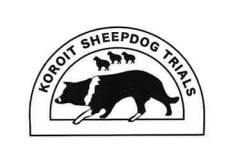By Zoe Vogels, The Vet Group
Recent bushfires in the region have provided us all with a timely reminder to sit down and plan what actions we will take in the event our properties are threatened by a bushfire.
It goes without saying that your safety and the welfare of your family must come first and the CFA along with other key Government agencies do a good job of communicating this.
The information and tools available at www.cfa.vic.gov.au are relevant to everyone and I want to stress that they should be used to plan for the safety and welfare of your family.
What about the dairy herd?
I would encourage all farmers to take some time to sit down with family members, employees and even neighbours to talk through actions that can be taken to protect your herd from fire.
One of the most important decisions to make is where you will move your herd and young stock to on days of extreme or catastrophic fire danger – or should a fire be imminent in your area.
If it is safe to do so, your herd should be moved to a low risk area. This might include chewed-out crop paddocks, ploughed paddocks, irrigated paddocks, green summer crops or yards and small paddocks that are protected by laneways or firebreaks.
If you can’t identify such an area – now might the time to create one. Maybe you could mow or, better still, plough a firebreak around a suitable site. While you’re at it, why not do the same thing along roads, under powerlines and around haystacks and other buildings?

Is there plenty of water for your herd?
Keep in mind that your animals may need to stay in your low risk area for many hours, a day or even longer.
An adequate supply of water and enough room for the animals to move around and access that water will be the thing that keeps them alive. It will undoubtedly be a hot day, when the animals are already susceptible to dehydration.
A dairy cow will drink up to 250 litres of water on a hot day. Regardless of how much water is in your dam or bore, a single trough with inch-pipe will never keep up. Think about the plumbing that you have in place and its capacity to do the job required.
It will be imperative to pre-plan what you will do to provide enough water for your herd to survive the event in the area you have identified as low risk.
Remember, when it comes to planning for any fire measures, it is always best to assume the power has been cut.
How will I milk?
After a bushfire has impacted your area or farm, milking the herd may present a whole new set of challenges.
For example, can you milk without power? Do you have adequate diesel or PTO powered generators? Can your generators power both the dairy plant and the refrigeration? If not, can you switch between the two well enough to get the job done safely?
Your challenges will be unique to your individual circumstances. The important step is thinking about, and planning for the event, should it ever occur. It may be beneficial to collaborate with a neighbour and have a plan should one of you still have the capacity to operate a dairy, including any biosecurity measure that may be necessary.
What records can’t you do without?
If fences are destroyed or stock escape, it will be important that all your animals’ NLIS ear tags are in place so that you can reclaim them once the incident has passed.
Another important record to maintain is your inventory, including photos of stored feed, machinery and other valuable farm infrastructure.
It’s a good idea to store a contact list, your farm records, your laptop and other information that is critical to your business in one place so that it can easily be taken offsite if required.
Another method is to have important data and documents backed-up in another location, either online or at another physical location.
What else can I do?
Assume you have no power and run through all the things you and your farm does on a daily basis that rely on electricity. How will you adapt without power?
Things as simple as listening to the radio without power can present problems. In the event of a fire, the radio is critical to stay informed, so make sure you have one that is battery powered.
Similarly, a lot of cordless home phones don’t operate without mains power. In some houses, mobile phone coverage also relies on electricity. We have a non-powered handset in the house for power outages.
We all spend a lot of time in our farm utes, so spend a little time to store some essentials in there like drinking water, heavy cotton overalls, eye protection, leather gloves, a phone charger, heavy woolen blanket and fence cutters.
I hope this helps you and your family plan for the health and wellbeing of your dairy herd, but please always put you and your family first and use the tools available on the CFA website to better plan for what to do before and during a fire.































